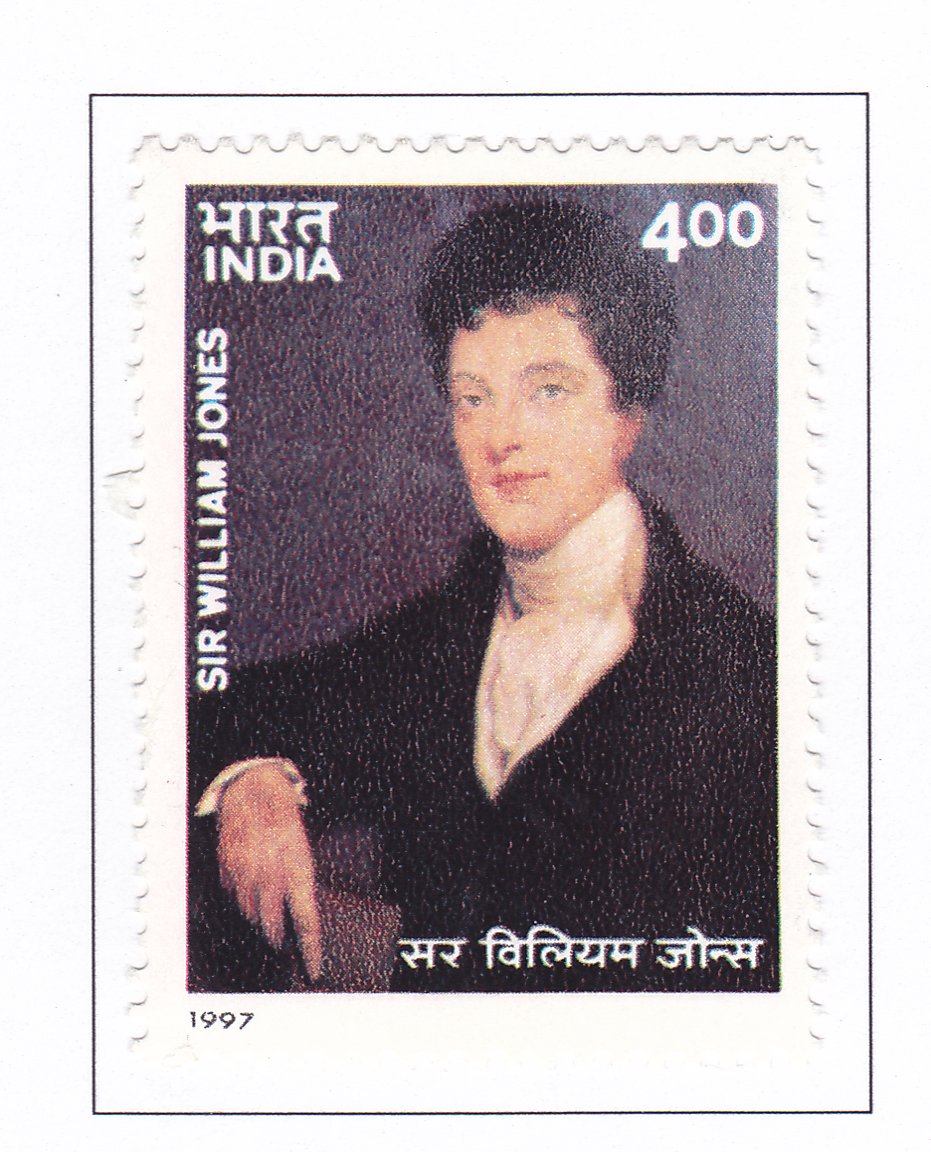Sir William Jones (1746-1794) – 250th Birth Anniversary

Technical Data
| Date of Issue | September 28, 1997 |
|---|---|
| Denomination | Rs. 4 |
| Quantity | 400,000 |
| Perforation | comb 13 x 13½ |
| Printer | Security Printing Press, Nashik |
| Watermark | No Watermark |
| Colors | Multicolor |
| Catalog Codes |
Michel IN 1573 Stamp Number IN 1626 Yvert et Tellier IN 1343 Stanley Gibbons IN 1737 |
| Themes | Anniversaries and Jubilees | Famous people | Lawyers-Advocates | Men |
Table of Contents
Commemorative Stamp Set: Sir William Jones
Design Elements:
- The stamp prominently features a portrait of Sir William Jones, based on a painting by Robert Home.
- The background includes motifs representing his contributions to Indology, such as ancient Indian scripts, and texts, and imagery of Sanskrit literature.
- The color scheme includes shades of deep blue and gold, symbolizing the richness of the ancient knowledge he helped revive.
- The stamp also incorporates elements of the Asiatic Society, including its emblem, as a nod to his role in founding the institution.
Cultural and Historical Significance:
- Sir William Jones was a pioneering figure in the field of Indology and Oriental studies, laying the foundation for the academic study of India’s ancient history, language, and literature.
- His translation of key Sanskrit works like Kalidasa’s “Sakuntala” introduced Indian literature to the Western world, fostering a deeper appreciation and understanding of India’s rich cultural heritage.
- Jones’s establishment of the Asiatic Society in 1784 was a monumental step in promoting research into ancient Indian texts and history, thereby preserving and revitalizing India’s intellectual traditions.
- His contributions to linguistics, particularly in Comparative Philology, set the stage for the development of modern linguistics and helped uncover the connections between Indo-European languages.
Usage:
- This stamp is ideal for general postal use and serves as a significant item for collectors interested in historical figures, scholars, and the study of Indology.
- It can also be used in educational contexts to promote awareness of Sir William Jones’s contributions to the study of Indian culture and linguistics.
Importance of the Commemorative Stamp Set:
- The stamp set honors the 250th birth anniversary of Sir William Jones, recognizing his indelible impact on the study and preservation of India’s ancient culture and literature.
- By issuing this stamp, the Department of Posts celebrates Jones’s role in bridging the intellectual traditions of the East and West, highlighting his contributions to global knowledge.
- The stamp serves as a reminder of the rich cultural and literary heritage of India and the importance of scholarly endeavors in preserving this heritage for future generations.
Example of the Stamp Design:
- The stamp features a dignified portrait of Sir William Jones, set against a backdrop of ancient Indian manuscripts and symbols associated with the Asiatic Society.
- The border of the stamp includes the text “Sir William Jones” and commemorates his birth anniversary with the dates “1746-1794.”
- The year of issue, 1996, marking the 250th anniversary of his birth, is prominently displayed at the bottom.
The commemorative stamp set might include:
- A series of stamps depicting various aspects of Jones’s life and work, including his translation of “Sakuntala,” his founding of the Asiatic Society, and his contributions to the field of linguistics.
- Additional stamps could highlight his role in promoting the study of Indian astronomy, law, and comparative mythology.
Significance:
- This commemorative stamp set not only honors Sir William Jones’s remarkable contributions to the study of Indian culture but also underscores the importance of cross-cultural scholarship in fostering global understanding.
- It serves as a tribute to a scholar whose work laid the groundwork for modern Indology and contributed to the intellectual awakening of India, ultimately influencing the rise of Indian nationalism.
